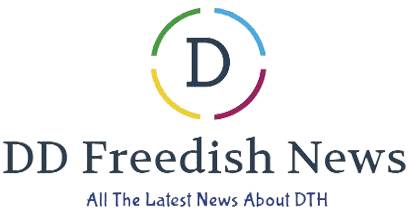Americans suffer over 800,000 heart attacks every year. Of those, a surprising number are what doctors call silent heart attacks–heart attacks that don’t have obvious symptoms that the person would notice. That’s right: not every heart attack is the traditional arm-numbing, chest-clutching affair you may be used to seeing on television. There are actually several types of heart attacks.
Different types of heart attacks affect the body in different ways, and each has a particular method of treatment. They also differ in severity, although every kind of heart attack is dangerous and requires medical attention.
Understanding the different kinds of heart attacks can help you look out for signs you might otherwise miss. Keep reading for a list of heart attacks, as well as their symptoms and treatments.
STEMI Heart Attacks
If you had to describe a heart attack right now, what would you say? You’d probably default to the heart attack symptoms we’ve all seen in media: shortness of breath, tightness in the chest, and arm pain.
If so, you’ve just described the most common form of heart attack, the ST-segment elevation myocardial infarction, or STEMI heart attack for short. To understand what that means, let’s break it down word by word.
First, we need to know what an ST-segment is. It’s a pattern on an electrocardiogram–a display of your heartbeat. STEMI heart attacks cause an elevated pattern on this display.
As for myocardial infarction, well, that’s basically a medical term for a heart attack!
We’ve already covered a few symptoms of these kinds of heart attacks, but there are others to look out for as well. Nausea, lightheadedness, anxiety, and a sudden cold sweat can all be indicators, too.
If you find yourself suddenly experiencing several of these symptoms at once, you should seek medical help immediately.
A STEMI heart attack is the result of a coronary artery being completely blocked. That prevents your heart from receiving the blood it needs.
Treatment often involves catheters that doctors insert to reopen the artery. This process is called angioplasty. Thrombolytic medicines, or clot busters, may be used as well.
NSTEMI Heart Attacks
This type of heart attack is a little easier to define now that we understand STEMI heart attacks. These are non-ST segment elevation myocardial infarctions. It doesn’t result in the same elevated pattern as a STEMI attack.
That’s because, unlike a STEMI heart attack, an NSTEMI is not the result of a full blockage. These heart attacks occur when a coronary artery is only partially blocked.
These types of heart attacks cause less damage, but that doesn’t mean you can ignore them. They can still result in serious harm to your heart and require immediate medical attention.
While these blockages are usually temporary, the damage they cause is permanent!
When the heart is damaged, it releases a protein called troponin. Testing positive for troponin is a good indicator that a person has suffered an NSTEMI heart attack.
The symptoms for NSTEMI heart attacks are the same as STEMI heart attack symptoms.
Things are similar on the treatment side, too. There’s a better chance that doctors will treat these kinds of heart attacks with medicine alone. In extreme cases, an angioplasty may still be necessary.
Coronary Artery Spasms
A coronary artery spasm is a different kind of heart attack that isn’t the result of a blockage. Instead, a coronary artery spasm happens when the walls of an artery constrict.
The constricted walls cut off blood flow just like a blockage would. The damage that results may not be permanent, but they’re still dangerous.
A coronary artery spasm increases the odds that you’ll have another heart attack in the future. That heart attack could be more serious. Constricted arteries can make STEMI or NSTEMI heart attacks more likely.
Symptoms can range from the same ones listed for STEMI attacks to muscle soreness and indigestion.
Coronary artery spasms are the silent heart attacks referred to at the start of this article. They don’t cause lasting damage and their symptoms are less severe, so a person may not realize they’ve had one.
The only way to know for sure if you’ve had a coronary artery spasm is by getting blood work done. Even imaging can’t always detect a coronary artery spasm, since there’s no blockage to detect.
Doctors treat these types of heart attacks with medicine, but not the clot busters used in other attacks. Nitrates and beta-blockers are the most common treatments.
Click here to learn more about silent heart attacks.
Other Heart Issues
There’s one more kind of heart attack to know about: the demand ischemia. Unlike the other kinds of heart attacks, this one doesn’t have much to do with blood flow. It’s caused by a lack of oxygen.
When your heart needs more oxygen than your blood supplies, demand ischemia is the result.
The symptoms will sound familiar: shortness of breath, pain in the jaw or left arm, and sweating. Vomiting and a faster heartbeat can also result from this kind of heart attack.
Treatments are much like the ones you’d receive for a coronary artery spasm. In other words, medications like aspirin and beta-blockers.
Finally, we need to clear up a common misconception: cardiac arrest is not the same thing as a heart attack.
The key difference is that in cardiac arrest, a person’s heart stops beating entirely. In a heart attack, the heart is still beating. It’s beating in an abnormal rhythm, though, which causes damage and can be fatal.
In short: a heart attack can lead to cardiac arrest, but a cardiac arrest is not another term for a heart attack.
Know the Types of Heart Attacks
Knowing how to identify the various types of heart attacks might save your life or the life of a loved one. By understanding different heart attack symptoms, you’re taking a proactive role in your own health!
The best way to prevent a heart attack is to live a healthy lifestyle. For advice and articles on keeping fit, visit our health blog!











